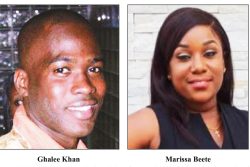The chaos produced by the Trump immigration ban offers a glimpse of the disruptions that American institutions should expect in the near future. The executive order on immigration was a measure that plays well with the President’s base, a bold attempt to deliver on candidate Trump’s promises to strengthen America’s borders, and one of the opening moves in his promised campaign to “eradicate” the threat of radical Islam. As the administration later noted in its defence, the order was also based on analysis carried out by the previous administration regarding possible threats from the seven predominantly Muslim countries named in the temporary ban.
Unaccustomed to such precipitous governance however, the US immigration system immediately encountered hundreds of unanswerable legal and ethical questions. In one notable case, lawyers from the International Refugee Assistance Project had to intervene on behalf of Hameed Khalid Darweesh, an Iraqi refugee who had worked as an interpreter for the 101st Airborne Division in Baghdad and Mosul. The Darweesh family arrived in the US a few hours after the executive order was signed. Mrs Darweesh and her three children had already been cleared immigration and were in the arrival hall when immigration officials invited them back into customs area in order to detain them. When the family’s lawyer clarified that this was not an order but a request, he advised them to leave the airport. For several hours Customs and Border Protection (CBP) agents refused to let lawyers speak with Darweesh, claiming that he was ineligible for due process since he had not yet officially entered the country. Only after a US Congress-woman took an interest in the case and held a small press conference outside the terminal did the CBP agree to release Darweesh who, quite understandably, was bewildered by this surreal turn of events.
A day after Darweesh’s release, protests coordinated on social media summoned large crowds to JFK International Airport where they held up placards and chanted slogans against the ban. Meanwhile scores of immigration lawyers volunteered to represent people who had been caught up in the immigration ban. This cat-and-mouse exchange lasted until a federal judge in Brooklyn, responding to a claim filed by the American Civil Liberties Union, ruled that the ban could cause the affected detainees “irreparable harm” and stayed the order.
Apparently undeterred by the confusion President Trump doubled down on his immigration stance in the following days. Speaking by phone with Australian Prime Minister Malcolm Turnbull, Trump balked at honouring a deal in which the US would take 1,250 refugees detained by Australia since it hardened its own immigration policy in July 2013. These refugees, many of whom have fled indescribable horrors in their homelands, have endured the most degrading and inhuman mistreatment on the islands of Manus and Nauru. Australia is desperate to relocate them and close the detention centres. Not only did Trump threaten to scuttle the deal with one of his country’s most longstanding allies, he then decided to air his grievances on Twitter: “Do you believe it? The Obama Administration agreed to take thousands [sic] of illegal immigrants from Australia. Why? I will study this dumb deal!”
A great deal could be said about President Trump’s apparent inability to distinguish illegal migrants from refugees who have endured unspeakable horrors and extensive vetting in order to find safety. But instead of trying to decipher the President’s whims from the petulant public justifications that accompany them, Americans might remind him of the fate of the European Jews who sought refuge in neighbouring Canada during the 1930s and ʼ40s. When asked how many refugees his country should allow in to escape Nazi persecution, a senior Canadian official gave the infamous reply: “None is too many.” At the time, in the words of a distinguished historian, Canada was not the welcoming, multicultural state it subsequently became, but a “benighted, closed, xenophobic society” with “racist and exclusionary” immigration policies. Its “oppressive anti-Semitism” reached all the way into “the upper levels of the Canadian government”, so it had few qualms about refusing sanctuary to the world’s most vulnerable refugees.
The Trump administration is perilously close to fostering similar attitudes within the upper echelons of the current US government. Against it stand the de facto “opposition party” of the media, the courts, an embattled liberal intelligentsia and most importantly, principled conservatives who have a unique opportunity to resist their party’s drift towards self-destructive ethno-nationalist populism. As a country built on immigration, with countless stories of how the poor and huddled masses of one generation give rise to the artists, inventors and leaders of the next, the moral and political stakes in the US could not be higher.








